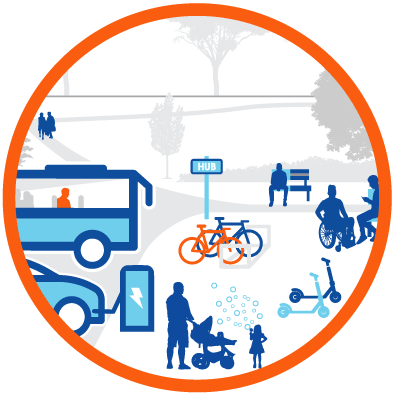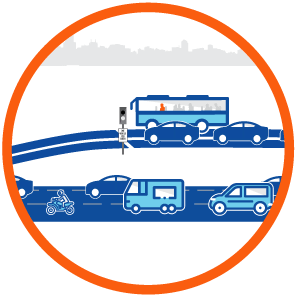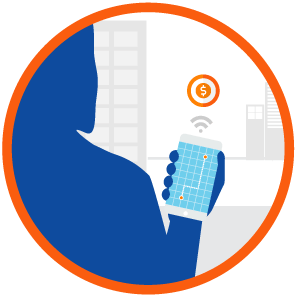Part-time transit lanes
Part-time
Transit Lanes
Express Lane Completion
Shared
Mobility Hubs
Mobility as
a service
Automated
Driving Systems
Advanced
Technologies
Overview
The Part-Time Transit Lanes (PTTL) project is one of the six ground-breaking projects that make up Contra Costa Transportation Authority’s (CCTA) INNOVATE 680 program. This program seeks to implement a carefully curated suite of projects that, when operating together, will address corridorwide congestion, travel delays, and long-standing operational challenges along Interstate 680 (I-680) in Contra Costa County.
The PTTL project will enable buses to travel on the right shoulder (or transit-only lanes) to bypass congestion during periods of heavy traffic. This will not only help reduce congestion on the freeway, but it will also make transit more reliable. In Contra Costa County, part-time transit lanes are currently planned between Bollinger Canyon Road and the Walnut Creek BART station.
Several U.S. cities have successfully implemented part-time transit lane systems, some of which have been in operation for a number of years.
- Minneapolis-St. Paul, MN
- Atlanta, GA
- Chicago, IL
- Columbus, OH
- Miami, FL
- Raleigh-Durham-Chapel Hill, NC
How Part-Time Transit Lanes Work
Lane speed limit = 35 mph
Bus travel speed cannot be greater than 15 mph over the bypassing traffic speed.
For example, if traffic is stopped (zero miles per hour), the bus using the part-time transit lane can travel at a max speed of 15 mph.
0mph + 15mph = 15mph max speed
If congested traffic is moving at 20 miles per hour, the bus using the part-time transit lane can travel at the max speed of 35 mph.
20mph + 15mph = 35mph max speed
Buses will yield to all traffic incidents on shoulder
Goals
Provide faster, more reliable transit
Increase bus ridership
Decrease use of single occupancy vehicles
Reduce congestion and VMT, thereby improving air quality
Increase accessibility of efficient, safe travel
Improve overall transit experience for all riders
Vision of User Experience

Commuter opens mobility on demand app, chooses to travel by bike, then bus.

Commuter stores bike safely at a shared mobility hub, and boards bus.

Timed lights on city streets provide smooth ride to on-ramp.

Congestion on I-680 prompts bus to use part-time transit lane located on shoulder, bypassing traffic.

Commuter arrives with short walk to office.
For more info about this project, contact:
Hisham Noeimi – Director, Programming
Contra Costa Transportation Authority
925.256.4731
hnoeimi@ccta.net
